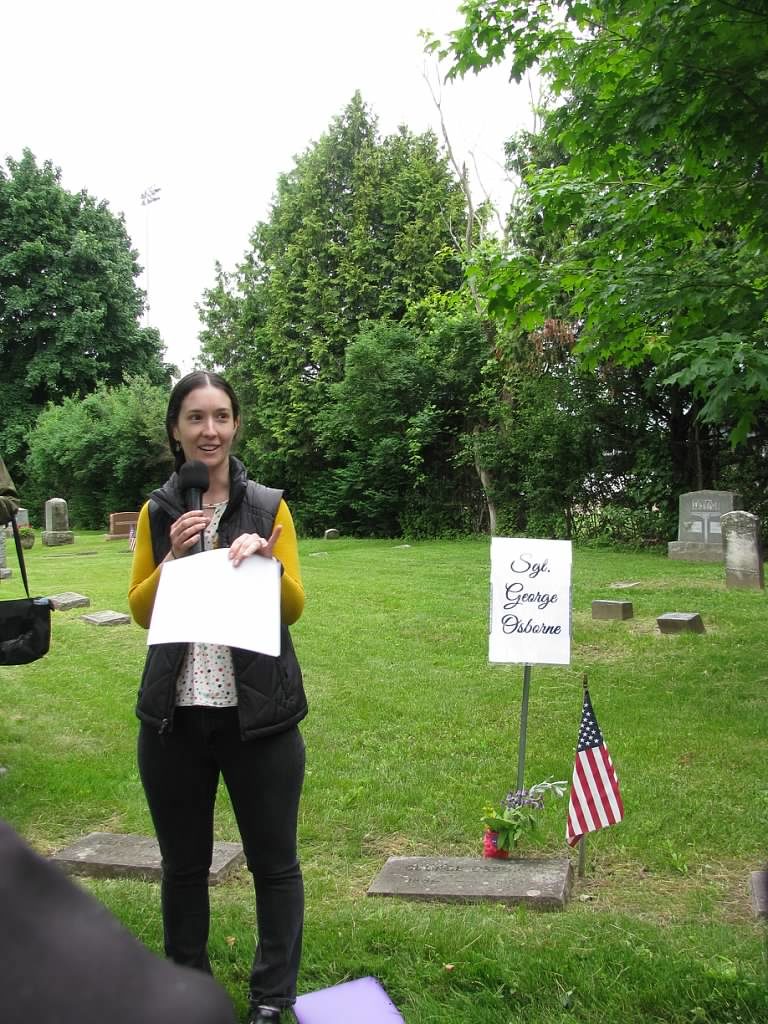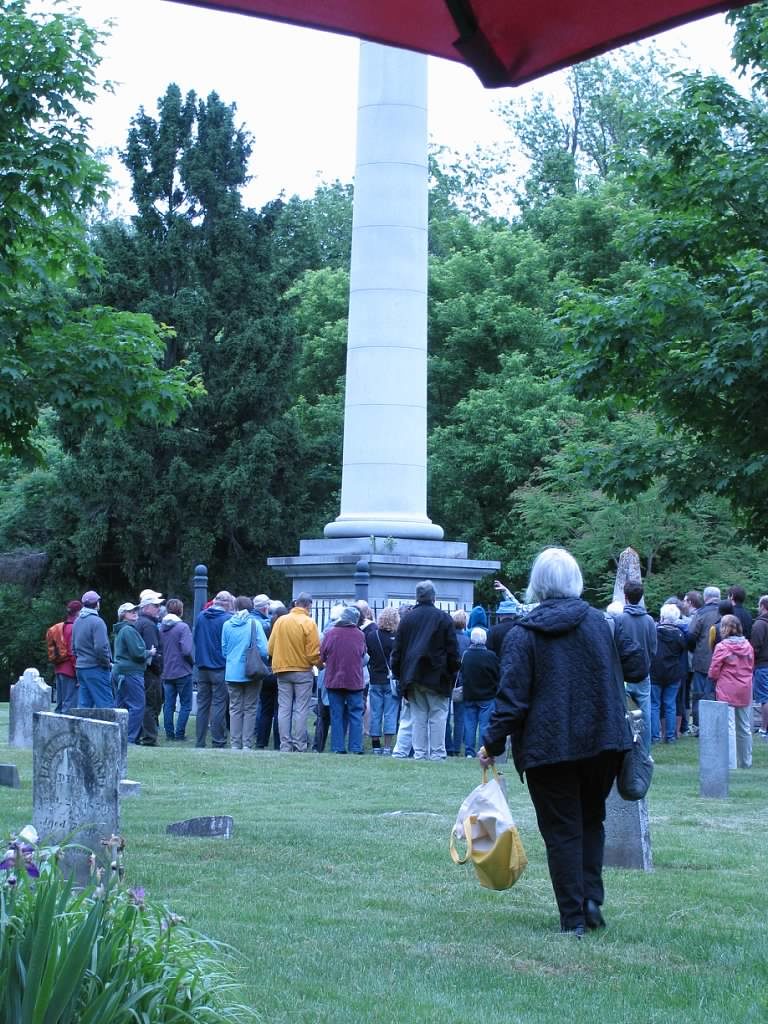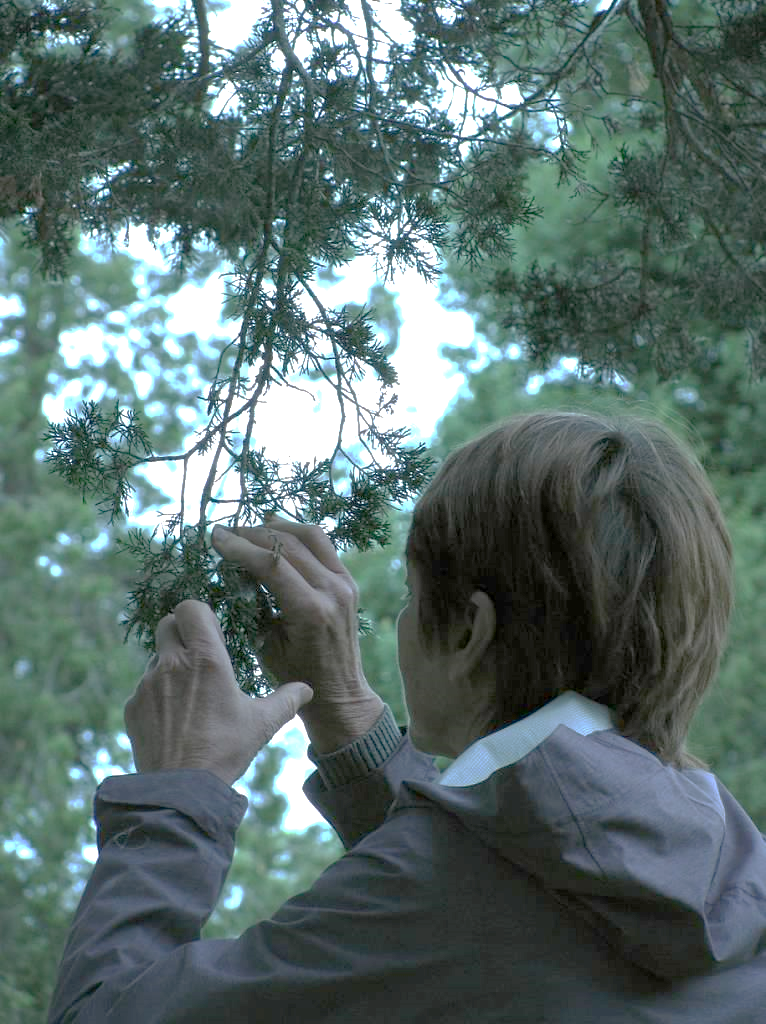Greenmount Cemetery & Tree Walk

About the event
As a commitment to educate the general public about local urban forests, a Tree Walk event is held in Burlington each year. This year’s tree walk, hosted through Branch Out Burlington and the Burlington Cemetery Commission, took place at Greenmount Cemetery from 10 am to 12 pm on June 11th. Nestled on Colchester Avenue, just past the north entrance to Centennial Field, this rich cultured place of burial and unique landscaping is managed through the Burlington Parks and Recreation Department.
The event was free and open to the public. Those who attended were joined by staff who led them through the cemetery, introducing significant trees and numerous historical monuments of the past three centuries. The walk featured 15-20 different trees, some of which were common species while others were unusual or rare. Through tree identification, visitors learned about the features of various trees, growth patterns, facts about particular habitats, and the historical culture of certain species. All guests were provided with a brochure, which mapped out and labeled each tree. All of the trees were numbered with metal tags, allowing visitors the opportunity to do self-guided tours of the trees later on. Download the brochure here: Greenmount Cemetery Self Guided Tour
About Greenmount Cemetery
The map above was part of the event pamphlet, highlighting the tour route, names of trees and monuments and interesting facts about each one. Visitors have a chance to glimpse history and pay their respects daily between dawn to dusk. Greenmount is Burlington’s oldest cemetery, with monuments dating back to the late 1700’s. Historical figures are laid to rest at this serene destination, joined by various city laborers, families, and key leaders from the community.

Monuments and Trees
The most notable figure being Revolutionary War hero – Ethan Allen. Other monuments erected to commemorate notable public figures included George Edmunds – who served in the US Senate and Vermont legislature, bringing impeachment procedures against President Jackson in 1868. Mary Fletcher – who inherited a large sum of money and chose to create the Fletcher Free Library, a hospital and a nursing school. Henry Smalley – who served as a Brigadier General in the Civil War. Burlington’s Smalley Park was later named in his honor.
In addition, both native and non-native trees were highlighted along the tour. Their qualities and abilities ranged greatly. The Dawn Redwood, a deciduous conifer, was known to be extinct but resurfaced in China during WWII. The ‘Heritage’ River Birch, with its luscious exfoliating bark, is one of the most disease – and insect- resistant of the ornamental birch trees. The Northern White Cedar species is known as the tree of life due to early settlers using its soft green needles to make tea, which helped to treat scurvy. The native Bur Oak had the tolerance to replace trees destroyed in the 1998 ice storm and the Norway Spruce, a non-native conifer, is known as the “cemetery pine” for its weeping branches.
Visit http://branchoutburlington.org/ to learn more about local urban forests, and events and workshops hosted through Branch Out Burlington, a nonprofit organization dedicated to assisting the city with replanting efforts, providing educational forums and sponsorships, and empowering the community to help take care of the trees of Burlington.



